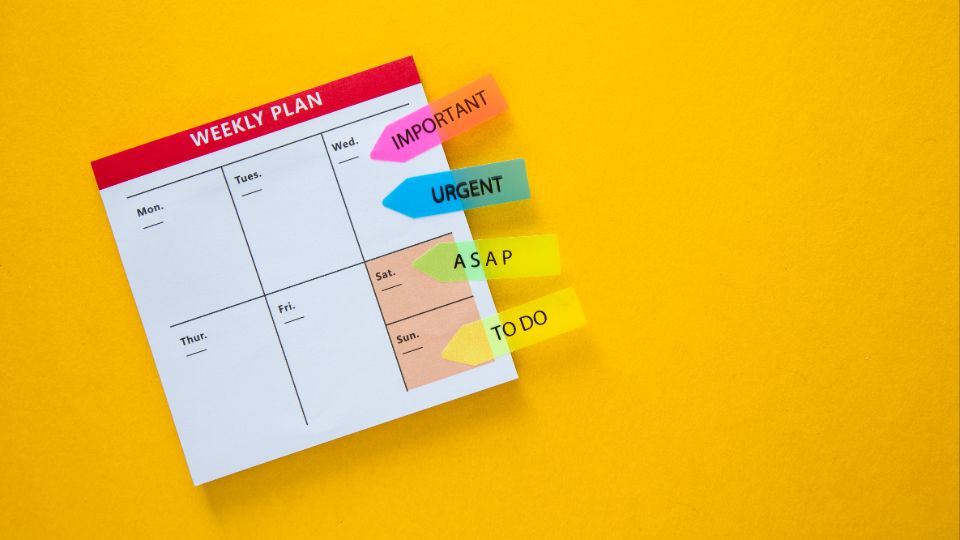What to Look for in a Task Planner
In today’s fast-paced world, an efficient task planner is essential for staying organized and productive. Whether you’re managing work tasks, personal projects, or daily errands, the right planner can help you stay on top of everything. But with so many options available, how do you choose the best one? Here’s what to look for when selecting a task planner.
1. User-Friendly Interface
A task planner should simplify your workflow, not complicate it. Look for:
- A clean layout with intuitive navigation.
- Minimal clutter for quick task entry and tracking.
- Simple features that don’t require a steep learning curve.
If the interface is too complex, you might spend more time managing tasks than completing them.
2. Task Organization Features
The best planners offer multiple ways to categorize and track tasks. Key features include:
- Task categorization (projects, priorities, or labels).
- Checklists and subtasks to break down large tasks.
- Tags and filters for easy sorting and searching.
These features help keep your workflow structured and prevent critical tasks from slipping through the cracks.
3. Customization Options
Everyone has a unique way of managing tasks, so a planner should adapt to your workflow. Look for:
- Different views (daily, weekly, monthly).
- Custom fields and templates for personalized tracking.
- Color themes and priorities to match your style.
A customizable planner allows you to tailor the system to your needs rather than forcing you into a rigid structure.
4. Collaboration & Sharing Capabilities
If you work in a team or share responsibilities, a planner with collaboration features is a must. Useful features include:
- Task assignment and delegation for clear ownership.
- Shared lists and calendars for team-wide visibility.
- Real-time updates and notifications to keep everyone aligned.
This ensures smooth communication and prevents mismanagement of tasks.
5. Reminders & Notifications
A good task planner helps you stay on track by reminding you of important deadlines. Look for:
- Deadline alerts and due date reminders.
- Recurring task automation to handle routine work.
- Push notifications and email alerts to keep you accountable.
These features help you manage tasks proactively instead of reacting to missed deadlines.
6. Cross-Platform Accessibility
Your planner should sync seamlessly across all devices so you can access tasks anytime, anywhere. Check for:
- Compatibility with desktop, tablet, and mobile devices.
- Cloud-based syncing for real-time updates.
This ensures your tasks are always up to date, no matter where you’re working from.
7. Integration with Other Tools
Most professionals use multiple tools for work and personal productivity. A planner that integrates with existing software can significantly boost efficiency. Look for compatibility with:
- Google Calendar & Microsoft Outlook for scheduling.
- Slack & Trello for team collaboration.
- Project management and note-taking apps to streamline workflows.
A well-integrated planner saves time by reducing the need to switch between platforms.
8. Analytics & Productivity Insights
Advanced planners offer insights to help you improve efficiency. Some key features include:
- Time tracking to see how long tasks take.
- Task completion rates to measure progress.
- Performance reports for spotting productivity patterns.
These insights help refine your workflow and optimize how you manage time.
9. Offline Mode Availability
For those who travel frequently or work in areas with unreliable internet, an offline mode is invaluable. Look for planners that:
- Allow task updates offline.
- Automatically sync changes once online.
This ensures your productivity isn’t disrupted by connectivity issues.
10. Pricing & Value for Money
Finally, consider whether the planner fits your budget. Many free planners provide basic functionality, while paid options offer:
- Unlimited storage for tasks and projects.
- AI-powered productivity analytics.
- Premium customer support for troubleshooting.
Assess your needs before committing to a subscription—only pay for features that genuinely add value.
Final Thoughts
The best task planner is the one that aligns with your workflow, preferences, and requirements. Prioritize ease of use, organization features, and integration options to find the perfect fit. Whether you prefer a simple to-do list or a comprehensive productivity system, the right planner will help you track tasks efficiently and work smarter toward your goals.
